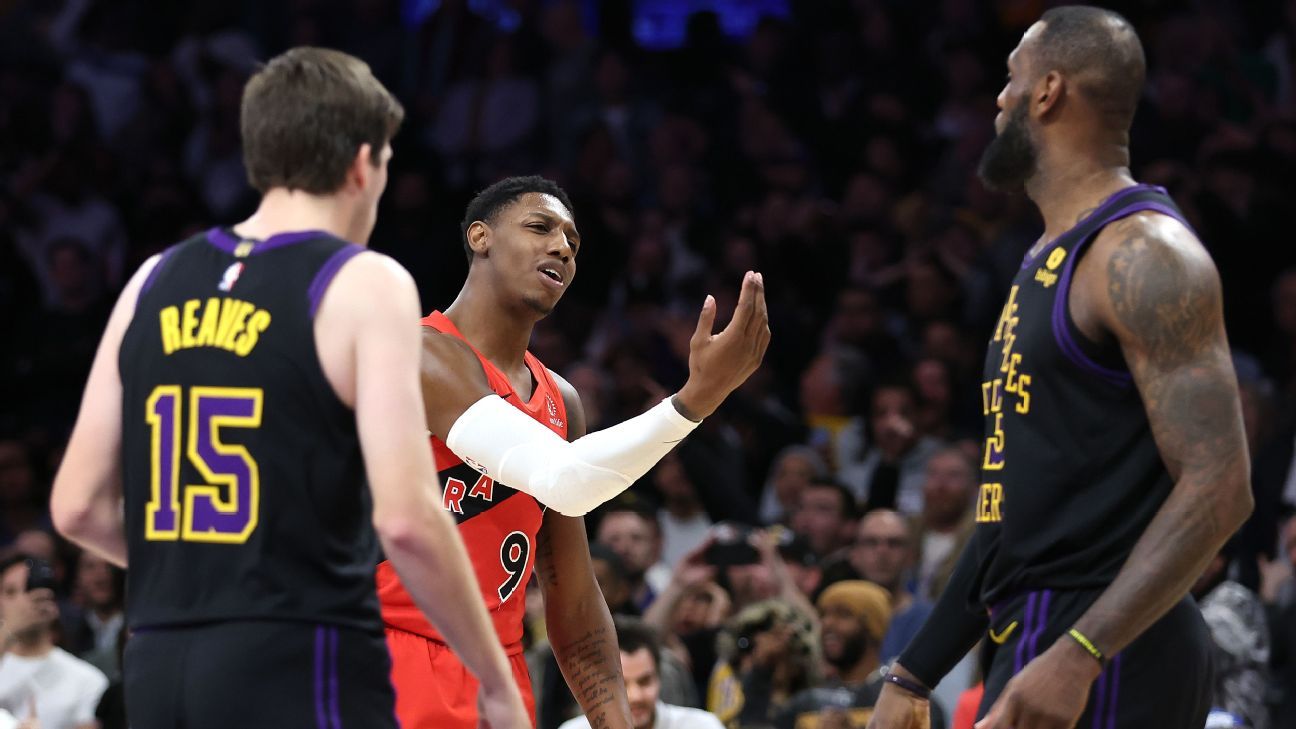Included in Thursday’s information that the Pac (1)2 is increasing — including Mountain West members Boise State, Colorado State, Fresno State and San Diego State forward of the 2026-27 athletic calendar — is a captivating footnote:
Oregon State and Washington State are reportedly preserving their eyes on Stanford and Cal as potential re-additions to the Pac-12, regardless of these packages formally becoming a member of the ACC this summer season.
That’s the kind of conjecture the ACC has to anticipate and endure when two of its league members, Florida State and Clemson, are actively suing to get out of the convention. The ACC is mired in 4 lawsuits in three separate states concerning these two soccer powers, each of that are looking for an early (and cheaper) exit from the league’s grant of rights, which extends to 2036.
In need of uncovering some authorized Hail Mary — one neither faculty has seemingly found, based on their authorized actions to this point — any unraveling of the league seemingly received’t be that straightforward or quick. As a substitute, it’s seemingly, whilst convention realignment rolls on, that the ACC has protections that can preserve it intact. Right here’s the place the league truly stands. League sources have been granted anonymity in change for his or her candor.
ESPN’s ‘look-in’ interval
The primary vulnerability the ACC has to take care of is its February 2025 “look-in” interval with ESPN, concerning the league’s tv contract. In Florida State’s preliminary 2023 submitting in opposition to the ACC in Florida, the college revealed that ESPN’s media rights contract with the ACC truly extends to solely 2027 — relatively than 2036 — and that ESPN needed to resolve by 2021 whether or not to increase it to 2036. In that very same submitting, FSU alleged that commissioner Jim Phillips prolonged that 2021 deadline to February 2025 with out approval from two-thirds of the league’s membership. So may ESPN pull out of the deal early subsequent yr?
ACC sources keep that the “look-in” is solely for tweaking the league’s media deal within the margins, advocating for (amongst different issues):
• Higher TV time slots for marquee ACC video games• Extra visibility for ACC groups on ESPN’s primary networks, as a substitute of the ACC Community• Different methods to maximise income inside the present ACC-ESPN contract
Moreover, each inside the league workplace and member athletic departments, there’s no understood rationale for why ESPN would need out of its present take care of the ACC. Put one other manner, why would ESPN willingly relinquish the ACC’s tv stock — particularly when it already has it locked in at a below-market-value charge for an additional decade?
About that charge — the specifics of the ACC-ESPN deal are pertinent to any realignment talks. In accordance with tax filings for 2022-23, the latest yr for which info is accessible, the ACC distributed about $44.8 million to every of its 14 full-time members. (Notre Dame, an affiliate member for soccer, additionally receives a partial share.) That ranks third amongst the ability 4 conferences, behind the Massive Ten — which distributed $60.3 million, on common, per faculty — and the SEC ($51.3 million per faculty), however narrowly forward of the Massive 12 ($44.2 million per faculty).
However these figures don’t account for latest realignment strikes, a lot of which went into impact this summer season. With Texas and Oklahoma now within the SEC, plus USC, UCLA, Washington, and Oregon now within the Massive Ten, these income gaps stand to solely develop. That’s very true when factoring in that the SEC and Massive Ten are anticipated to obtain nearly all of the expanded School Soccer Playoff berths — and due to this fact, the income that comes from making the 12-team discipline.
Subsequently, the one hypothetical motive why ESPN would go for a shortened ACC deal could be a wink-wink settlement with sure ACC faculties that, as soon as a shortened deal resulted in 2027, they might be a part of the SEC — due to this fact permitting the SEC and ESPN to barter an much more profitable TV deal.
Nonetheless, there are important sticking factors with that concept. Ought to the ACC grant of rights finish in 2027, business chatter means that a number of present ACC members — chief amongst them, North Carolina and Miami — would favor becoming a member of the Massive Ten over the SEC. Contemplating the Massive Ten has its media rights take care of Fox, not ESPN, there’s actually no incentive for ESPN to shorten the present ACC-ESPN deal and permit helpful ACC manufacturers to depart for an additional community’s profit.
So if in February, ESPN does formally lock in its tv contract with the ACC via 2036? Then the league and its members are proper again at sq. one: mired in courtroom proceedings that, realistically, might take one other decade to resolve.
The place do the lawsuits stand?
The ACC has maintained, each publicly and privately, that it doesn’t intend to settle with both Florida State or Clemson. On the league’s preseason media occasion in July, Phillips mentioned throughout his opening remarks that “we are going to struggle to guard the ACC and our members for so long as it takes,” including that “each member of this convention willingly signed the grant of rights, and fairly frankly, eagerly agreed to this tv contract.”
Behind closed doorways, the convention has doubled down on that sentiment. There’s the idea that if the ACC did settle with Clemson and Florida State, even in a state of affairs that netted the league a whole lot of tens of millions of {dollars}, the ensuing precedent — that withdrawal is feasible — could be so damaging that it will threaten the league’s existence.
To keep up its standing as an influence convention, the ACC should meet a 15-team threshold — which was a part of the league’s preliminary motivation for including Cal, Stanford and SMU. Even with Thursday’s enlargement information, the revamped Pac-(1)2 is unsure to obtain energy convention standing, additional disincentivizing Stanford and Cal from returning even when doing so have been possible.
With settling off the desk, each the league and the faculties suing to exit it are caught in a back-and-forth authorized battle. Earlier in September, in a authorized response to FSU and Clemson’s respective lawsuits, the ACC argued that the faculties missed their probabilities to push again in opposition to the league’s media rights contracts, since they accredited them and have accepted tens of millions of {dollars} from them over a number of years. The ACC claimed that the faculties missed their statute of limitations by three or 4 years, relying on the state.
As a second leg of its protection, the ACC additionally referenced Maryland’s departure from the league in 2013. In 2012, there was a 10-2 league vote to extend the withdrawal penalty for exiting faculties to 3 instances the ACC’s working finances; FSU and Maryland have been the dissenting votes, however Clemson supported the transfer. That mentioned, each ACC faculty besides Maryland voted to approve litigation in opposition to the Terps for the withdrawal price, after which accepted cost from it. The ACC is arguing, due to this fact, that Clemson and FSU can’t take problem with the identical departure course of — and penalty — this time round.
The league’s present withdrawal penalty is about $140 million. Florida State attorneys estimate that, wanting a courtroom victory nullifying the ACC’s grant of rights, it will price about $542 million to exit the convention.
And whereas the continuing lawsuits validate each faculties’ need to go away the convention, their different actions affirm that they’re unlikely to truly accomplish that, not less than not imminently. Neither faculty informed the ACC by this summer season’s Aug. 15 deadline that it meant to go away the league earlier than the 2025-26 athletic yr, locking each faculties in with the convention for not less than two extra full seasons. That’s the case no matter any future authorized selections.
How are ACC faculties reacting to the authorized standoff?
ACC faculties have pivoted their focus to prioritize additional income technology.
North Carolina, based on public data, has not less than had conversations with personal fairness companies, as did Florida State because it publicly raised issues concerning the rising hole between the ACC and SEC/Massive Ten earlier than it filed swimsuit. Neither faculty has superior past preliminary discussions.
Requested instantly if the ACC has mentioned partnering with personal fairness companies, Phillips mentioned he wouldn’t be doing his job if he didn’t discover all obtainable choices.
Elsewhere, the ACC has already acted with income technology in thoughts. Whereas the league formally added Cal, Stanford, and SMU this summer season, the situations of their acceptance have been that Cal and Stanford would obtain decreased (however escalating) TV distributions over the course of 12 years — beginning at about 30 p.c of the usual per-school distribution — till they reached full membership. SMU shouldn’t be receiving any distributions for its first seven years of membership. These situations created a pool of roughly $50 million that the league can disperse to its prior membership, as a technique to mitigate its rising income hole in contrast with the SEC and Massive Ten.
Moreover, this athletic yr — for the primary time in energy convention historical past — the ACC has established a “success initiative” that can funnel more cash to colleges with probably the most precise sports activities success, particularly in soccer and males’s basketball. Colleges can earn between $20 million-$25 million for giant years, mainly via the CFP. In accordance with the Related Press, ACC faculties that make the 12-team discipline will mechanically earn $4 million, plus one other $4 million for advancing to the subsequent spherical, $6 million for making the semifinals, and one other $6 million for showing within the nationwide championship sport — good for a most complete of $20 million. Colleges may earn further “success initiative” income for ending within the Prime 25 in soccer, and for qualifying for a postseason bowl sport.
That’s on high of the present system that rewards males’s basketball success, particularly making and advancing within the NCAA Event; the league at the moment earns “models” — that are paid to conferences through the NCAA — for every member faculty victory in March Insanity, as much as the Closing 4.
The NCAA is progressing on distributing “models” for the ladies’s NCAA Event, as effectively, and as soon as that’s official, these earnings may also be included within the ACC’s “success initiative” pool.
“It’s going to reward the groups which have probably the most success,” Phillips mentioned in July. “It’s not an absolute correlation, however people who make investments extra have the next probability to have success.”
Extra on the newest realignment information
Mandel: Pac-12 betting on the glory of the Playoff
What different groups may the Pac-12 poach?
(Picture: Eakin Howard / Getty Photographs)
























